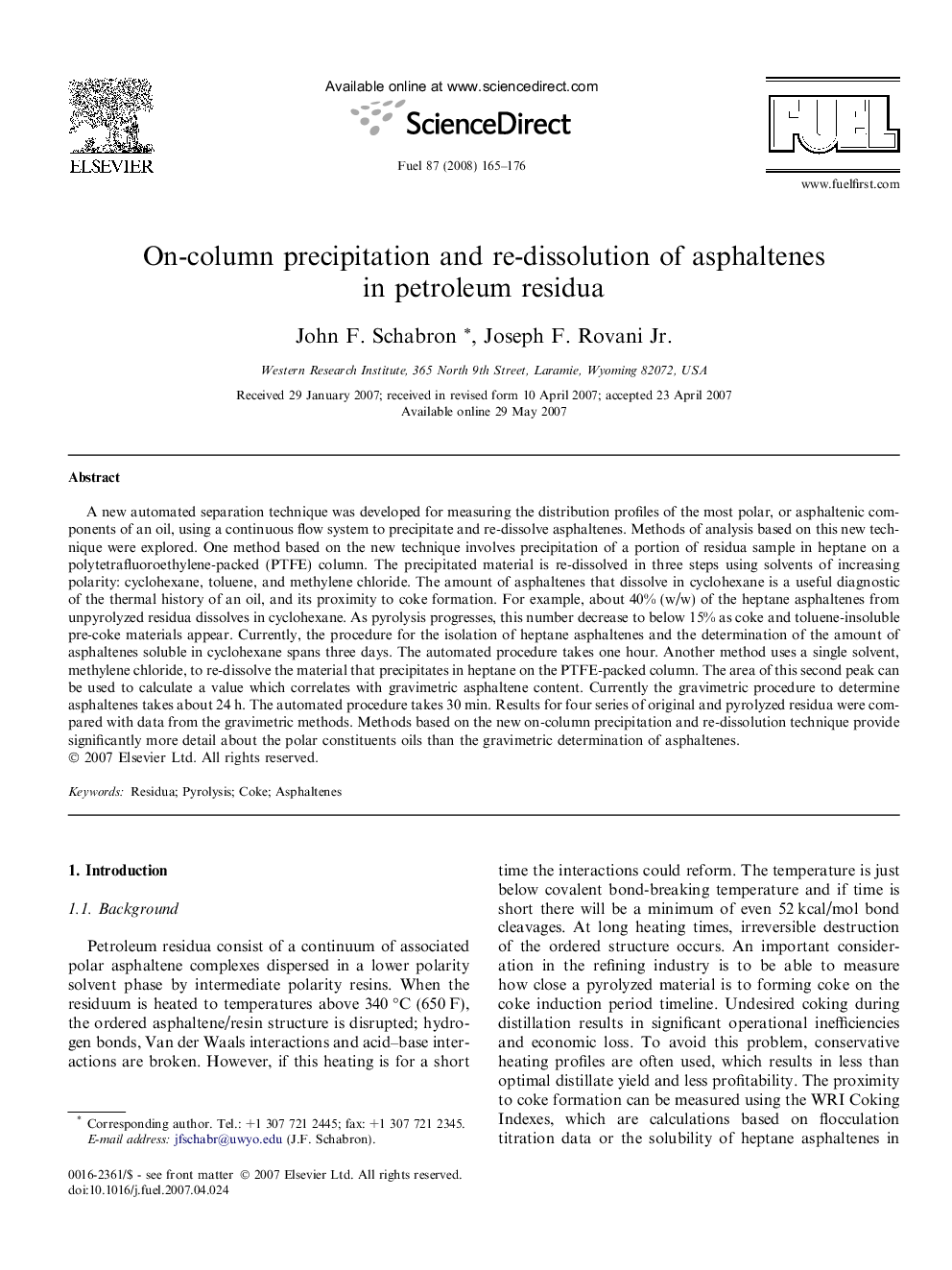| Article ID | Journal | Published Year | Pages | File Type |
|---|---|---|---|---|
| 207823 | Fuel | 2008 | 12 Pages |
A new automated separation technique was developed for measuring the distribution profiles of the most polar, or asphaltenic components of an oil, using a continuous flow system to precipitate and re-dissolve asphaltenes. Methods of analysis based on this new technique were explored. One method based on the new technique involves precipitation of a portion of residua sample in heptane on a polytetrafluoroethylene-packed (PTFE) column. The precipitated material is re-dissolved in three steps using solvents of increasing polarity: cyclohexane, toluene, and methylene chloride. The amount of asphaltenes that dissolve in cyclohexane is a useful diagnostic of the thermal history of an oil, and its proximity to coke formation. For example, about 40% (w/w) of the heptane asphaltenes from unpyrolyzed residua dissolves in cyclohexane. As pyrolysis progresses, this number decrease to below 15% as coke and toluene-insoluble pre-coke materials appear. Currently, the procedure for the isolation of heptane asphaltenes and the determination of the amount of asphaltenes soluble in cyclohexane spans three days. The automated procedure takes one hour. Another method uses a single solvent, methylene chloride, to re-dissolve the material that precipitates in heptane on the PTFE-packed column. The area of this second peak can be used to calculate a value which correlates with gravimetric asphaltene content. Currently the gravimetric procedure to determine asphaltenes takes about 24 h. The automated procedure takes 30 min. Results for four series of original and pyrolyzed residua were compared with data from the gravimetric methods. Methods based on the new on-column precipitation and re-dissolution technique provide significantly more detail about the polar constituents oils than the gravimetric determination of asphaltenes.
